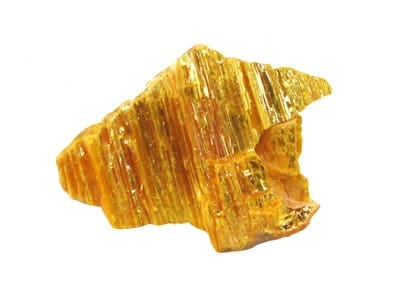
Arsenicum sulphuratum flavum
Latin name: Arsenicum sulphuratum flavum
Short name: Ars-s-f
Common name: Arsenic Sulphide (Yellow) | Orpiment | Yellow Arsenic Trisulphide | Arsenic Yellow | Arsenic(III) Sulphide
Primary miasm: Syphilitic Secondary miasm(s): Tubercular, Psoric
Kingdom: Minerals
Family: Inorganic compound (Arsenic salt combined with Sulphur).
- Symptomatology
- Remedy Information
- Differentiation & Application
This mineral, chemically As₂S₃, is a naturally occurring yellow crystalline arsenic trisulphide, often found as the mineral orpiment. It has been historically sourced from volcanic fumaroles, hydrothermal veins, and mineral deposits. The homeopathic preparation is made by trituration of the purified mineral, attenuated to remove its toxic effects while retaining its dynamic medicinal properties. It embodies the destructive, ulcerative, and cachectic qualities of arsenic combined with the sulphur element’s affinity for chronic suppuration, skin affections, and deep-seated glandular disease.
Historically used as a pigment in painting (brilliant yellow, though highly toxic), in traditional Persian and Chinese medicine for skin diseases, and in depilatory pastes. In toxicology, it is a severe poison, producing gastroenteritis, multi-organ failure, and chronic arsenic poisoning on repeated exposure.
Recorded primarily through clinical observations and toxicological reports, with proving symptoms collected by Clarke, Hering, and later Boericke. Known for its affinity to chronic skin disease with ulceration, discharges, and cachexia.
- Skin and subcutaneous tissue (chronic eruptions, ulcerations, exfoliation, psoriasis, lupus).
- Mucous membranes (especially nasal, pharyngeal, and respiratory).
- Lymphatic glands (induration, enlargement, suppuration).
- Nutrition and metabolism (cachexia, wasting after chronic discharges).
- Respiratory tract (chronic cough, bronchial catarrh, tubercular states).
- Blood and cellular metabolism (anaemia, weakness).
- Warmth in general, though with some desire for fresh air in cutaneous affections.
- Rest in bed during exhaustion phases.
- Continued gentle motion in early stages of debility.
- Cold, damp air, especially in coastal climates.
- Night, especially after midnight.
- Suppression of discharges (skin or nasal), which triggers internal aggravations.
- Autumn and spring seasonal changes.
- Exposure to wind on inflamed skin.
- Arsenicum album – Greater anxiety and restlessness, less marked skin ulceration with yellow crusts.
- Sulphur – More itching and aggravation from heat, less destructive ulceration.
- Graphites – Thick crusts and oozing, but with honey-like discharge rather than acrid.
- Hepar sulphuris – More suppuration and tenderness, less cachexia.
- Complementary: Sulphur, Hepar sulphuris.
- Antidotes: China, Nux vomica.
- Follows well: Calcarea sulphurica, Mercurius iodatus flavus.
Arsenicum sulphuratum flavum centres on chronic, destructive skin and mucous membrane disease, often linked to a deep constitutional deterioration—cachexia, ulceration, and glandular induration. The burning, acrid discharges of arsenic combine with sulphur’s affinity for chronic eruptions, giving a remedy suited to cases where suppression has driven the disease inward, leading to respiratory or metabolic decline.
Excellent in chronic eczema, psoriasis, lupus, and tertiary syphilis with ulceration. Indicated after suppression of skin diseases when chest symptoms arise. Useful in chronic nasal ulceration with yellow crusts. Often given in triturations (3x to 6x) for prolonged cutaneous conditions, higher potencies for constitutional prescribing.
Mind
- Anxiety about health.
- Restlessness at night.
Head
- Burning in vertex.
- Headache from chronic nasal catarrh.
Eyes
- Blepharitis with acrid discharge.
- Photophobia in skin disease of the face.
Stomach
- Burning gastric pain.
- Aversion to food in ulcerative states.
Skin
- Chronic eruptions with thick yellow crusts.
- Ulcerations with acrid discharge.
Extremities
- Eczema on forearms and hands.
- Weakness and muscle wasting.
Generalities
- Cachexia from chronic disease.
- Worse after midnight.
Clarke – A Dictionary of Practical Materia Medica: Chronic skin ulcerations, nasal crusts, cachexia.
Hering – The Guiding Symptoms: Ulcerations, glandular involvement, chronic respiratory states post-suppression.
Boericke – Pocket Manual: Keynotes for chronic skin disease.
Allen, T. F. – Encyclopaedia of Pure Materia Medica: Toxicology and proving fragments.
